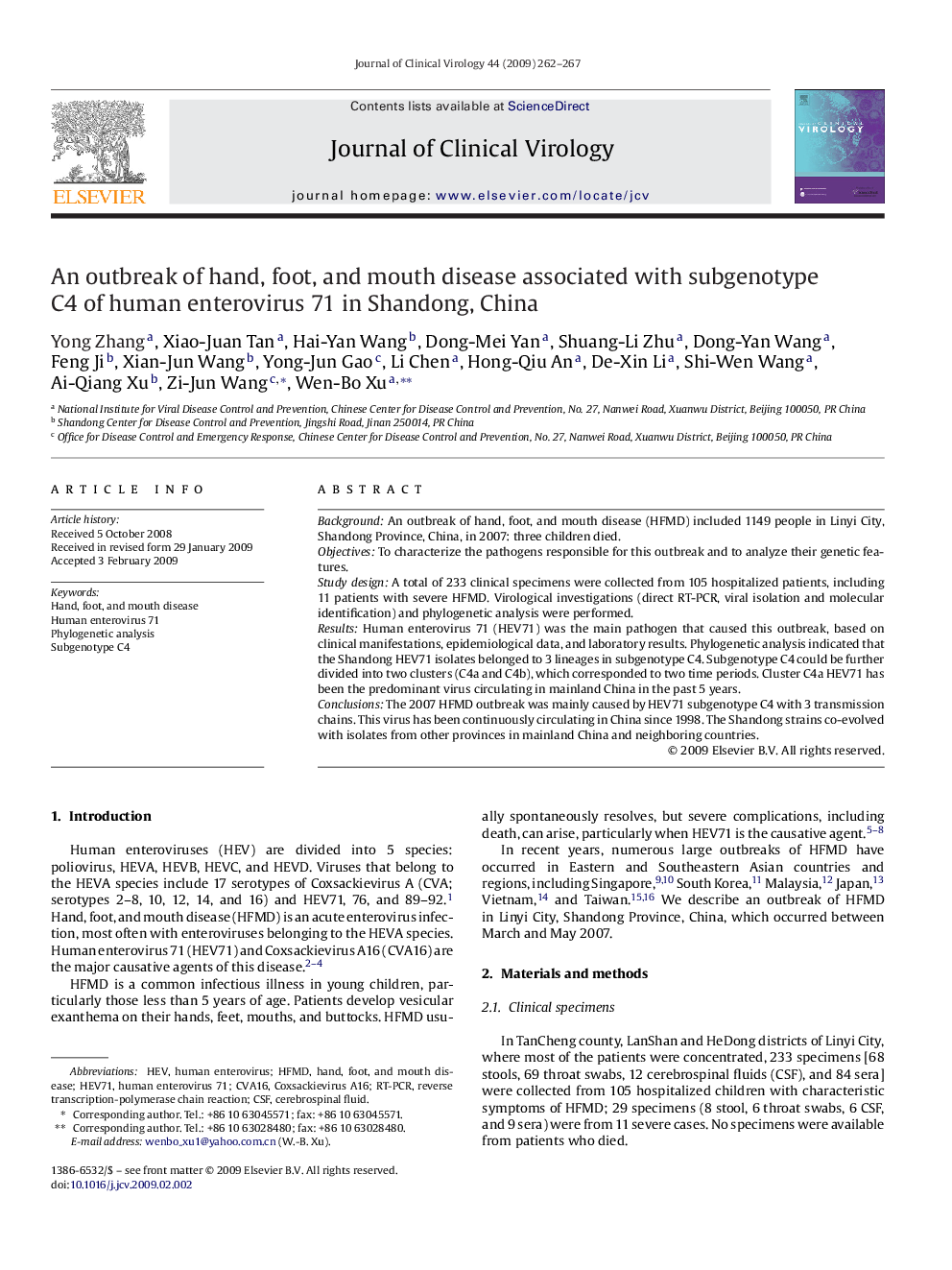| Article ID | Journal | Published Year | Pages | File Type |
|---|---|---|---|---|
| 3370037 | Journal of Clinical Virology | 2009 | 6 Pages |
BackgroundAn outbreak of hand, foot, and mouth disease (HFMD) included 1149 people in Linyi City, Shandong Province, China, in 2007: three children died.ObjectivesTo characterize the pathogens responsible for this outbreak and to analyze their genetic features.Study designA total of 233 clinical specimens were collected from 105 hospitalized patients, including 11 patients with severe HFMD. Virological investigations (direct RT-PCR, viral isolation and molecular identification) and phylogenetic analysis were performed.ResultsHuman enterovirus 71 (HEV71) was the main pathogen that caused this outbreak, based on clinical manifestations, epidemiological data, and laboratory results. Phylogenetic analysis indicated that the Shandong HEV71 isolates belonged to 3 lineages in subgenotype C4. Subgenotype C4 could be further divided into two clusters (C4a and C4b), which corresponded to two time periods. Cluster C4a HEV71 has been the predominant virus circulating in mainland China in the past 5 years.ConclusionsThe 2007 HFMD outbreak was mainly caused by HEV71 subgenotype C4 with 3 transmission chains. This virus has been continuously circulating in China since 1998. The Shandong strains co-evolved with isolates from other provinces in mainland China and neighboring countries.
